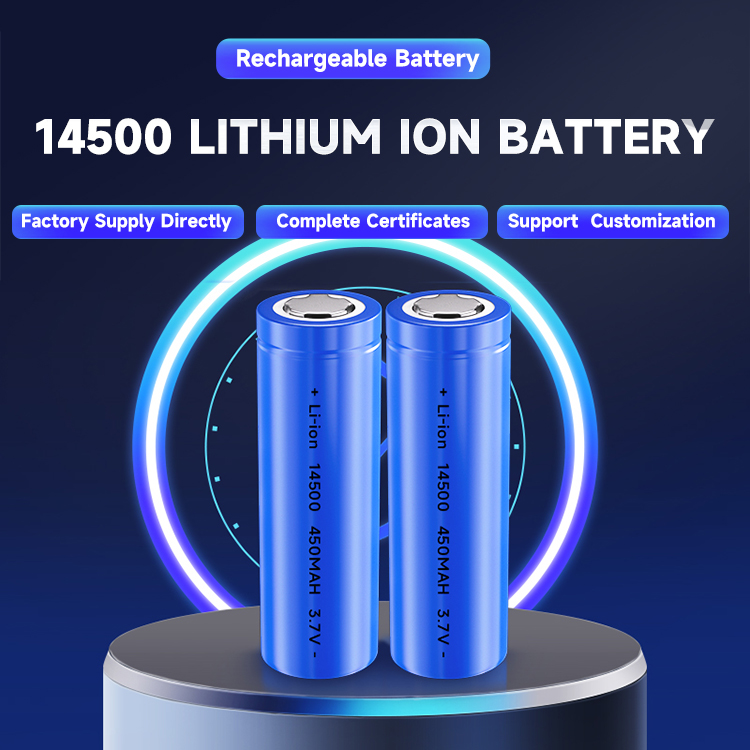
The parameter that expresses the energy storage capacity of lithium-ion batteries is energy density, which is roughly equivalent to the product of voltage and lithium battery capacity. In order to effectively improve the storage capacity of lithium batteries, people generally use methods to increase battery capacity. However, due to the nature of the raw materials used, capacity improvement is always limited, so increasing the voltage value has become another way to improve the power storage capacity of lithium batteries. As we all know, the nominal voltage of lithium battery is 3.6V or 3.7V, and the maximum voltage is 4.2V. So, why can’t the voltage of lithium batteries achieve greater breakthroughs? After all, this is also determined by the material and structural properties of lithium batteries. The voltage of a lithium battery is determined by the electrode potential. Voltage, also known as potential difference or potential difference, is a physical quantity that measures the energy difference between charges in an electrostatic field due to different potentials. The electrode potential of lithium ions is about 3V, and the voltage of lithium batteries varies with different materials. For example, a general lithium-ion battery has a rated voltage of 3.7V and a full-charge voltage of 4.2V; while a lithium iron phosphate battery has a rated voltage of 3.2V and a full-charge voltage of 3.65V. In other words, the potential difference between the positive and negative electrodes of lithium-ion batteries in practice cannot exceed 4.2V, which is a requirement based on material and use safety. If the Li/Li+ electrode is used as the reference potential, μA is the relative electrochemical potential of the negative electrode material, μC is the relative electrochemical potential of the positive electrode material, and the electrolyte potential interval Eg is the lowest electron unoccupied energy level and the highest electron occupied energy of the electrolyte. level difference. Then, the three factors that determine the maximum voltage value of a lithium battery are μA, μC, and Eg. The difference between μA and μC is the open circuit voltage (maximum voltage value) of the lithium-ion battery. When this voltage value is within the Eg range, the electrolyte can ensure normal operation. "Normal operation" means that the lithium-ion battery moves back and forth between the positive and negative electrodes through the electrolyte, but does not undergo an oxidation-reduction reaction with the electrolyte, thus ensuring the stability of the battery structure. There are two ways in which the electrochemical potential of the positive and negative electrode materials causes the electrolyte to work abnormally: 1. When the electrochemical potential of the negative electrode is higher than the lowest electron unoccupied energy level of the electrolyte, the electrons of the negative electrode will be captured by the electrolyte, so The electrolyte is oxidized, and the reaction product forms a "solid-liquid interface layer" on the surface of the negative electrode material particles, which may cause the negative electrode to be damaged. 2. When the electrochemical potential of the positive electrode is lower than the highest electron occupied energy level of the electrolyte, the electrons in the electrolyte will be captured by the positive electrode and thus oxidized by the electrolyte. The reaction product forms a "solid-liquid interface layer" on the surface of the positive electrode material particles. As a result, the positive electrode may be damaged. However, the possibility of damage to the positive or negative electrode is due to the existence of the "solid-liquid interface layer" that prevents further movement of electrons between the electrolyte and the positive and negative electrodes, and instead protects the electrode materials. In other words, to a lesser extent The "solid-liquid interface layer" is "protective". The premise of this protection is that the electrochemical potential of the positive and negative electrodes can slightly exceed the Eg range, but not too much. For example, the reason why most current lithium-ion battery anode materials use graphite is because the electrochemical potential of graphite relative to the Li/Li+ electrode is about 0.2V, slightly beyond the Eg range (1V~4.5V), but because of the "protection" The "solid-liquid interface layer" prevents the electrolyte from being further reduced, thereby stopping the continued development of the polarization reaction. However, the 5V high-voltage cathode material exceeds the Eg range of current commercial organic electrolytes by too much, so it is easily oxidized during the charge and discharge process. As the number of charge and discharge increases, the capacity decreases and the life span decreases. Now I understand that the reason why the open circuit voltage of lithium-ion batteries is chosen to be 4.2V is because the existing commercial lithium battery electrolyte Eg range is 1V~4.5V. If the open circuit voltage is set to 4.5V, it may be possible to increase the power output of the lithium battery. But it also increases the risk of battery overcharging. The dangers of overcharging have been explained by quite a lot of information, so I won’t go into details here. Based on the above principles, if people want to increase the energy density of lithium batteries by increasing the voltage value, there are only two ways to find it. One is to find an electrolyte that can match the high-voltage positive electrode material, and the other is to provide a protective surface for the battery. modified.
Read recommendations:
Rack-mounted energy storage battery GN-2560
How to protect power lithium ion batteries in daily use.12v 50ah lifepo4 lithium battery pack
Measures to Reduce the Self-Discharge Rate of Lithium Batteries
convenient energy storage power supply maker
Nickel Metal Hydride No. 5 battery












































 360° FACTORY VR TOUR
360° FACTORY VR TOUR
 Whatsapp
Whatsapp
 Tel
Tel Email
Email TOP
TOP